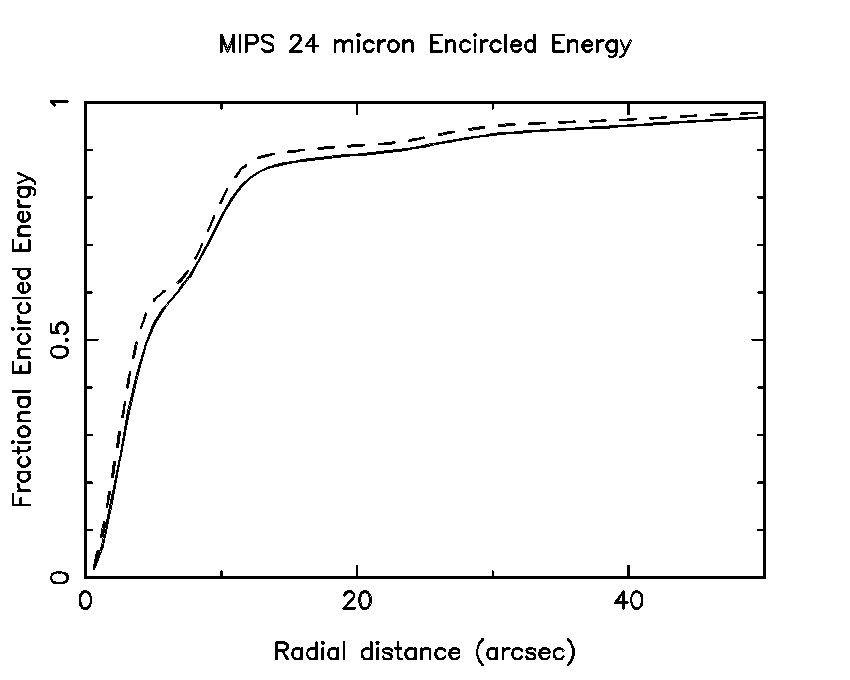Results
We now show the radial profile plot comparing the observed 24 micron PSF with SIRTF
Tiny TIM models. In this plot, the sky data is represented by three solid lines.
The central line is the median radial profile, and the upper and lower solid lines
represent "error bars" to the median profile. The errors are calculated for +1 and -1
sigma changes in the sky background level, and do not include systematic effects.
The dashed lines are the family of curves for model PSFs at negative focus positions,
and the dotted lines are the same but for positive focus positions. The two vertical
bold lines define the inner and outer boundaries of the second dark Airy ring, and
thus bound the region of interest for the data/model comparison. If the SIRTF
Tiny Tim models were exactly correct, if there were no systematic normalization
or alignment errors in the radial profiles, and if MIPS was in perfect focus, then
the median radial profile would appear as a flat horizontal line at radial profile
ratio value = 1.

Figure 1: Radial profile of the MIPS 24 micron PSF using the coaddition of
thirty-two 3 second exposure taken at 16 positions over the upper left quandrant
of the array.
Based on what model defocus values the median curve crosses, the formal focus determination
is +16 to +30 or -29 to -37. An error bar of +/- 15 microns still applies to each of these
ranges. The absolute value of the median defocus has shifted 4-7 microns closer to zero,
but the wide range of focus solutions allowed at each epoch is larger than this measured
shift, or the known magnitude of the focus move (-14 microns). No change in the image
FWHM was observed in a comparison between campaigns E and F, that is, before and after
the secondary mirror move.

Figure 2: Encircled energy plot for the MIPS 24 micron channel. The solid line shows
the sky data, and the dashed line shows an in-focus SIRTF Tiny Tim PSF model.
In Figure 2, two differences between the model and data are worth mentioning. First, at
large distances, the data appears asymptotic to a slightly lower encircled energy value
than the model. This is probably because of errors in determining the background around
the star; the 3% vertical photometry gradient was not compensated for. Second, at 4-7 arcsec
radius, the first dark Airy ring is more sharply defined in the model than in the data.
This is largely due to the fact that the 

